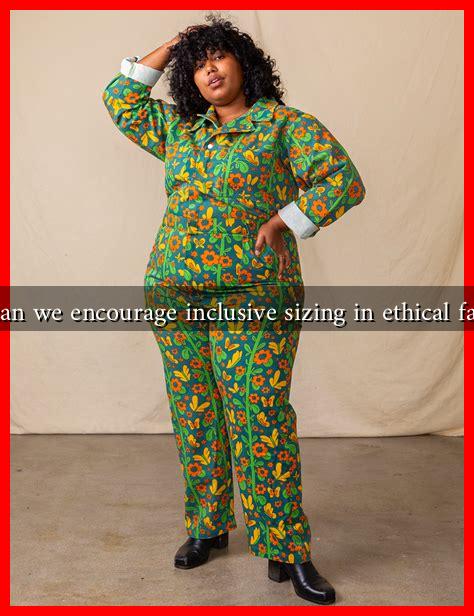-
Table of Contents
How Can We Encourage Inclusive Sizing in Ethical Fashion?
In recent years, the fashion industry has seen a significant shift towards ethical practices, focusing on sustainability, fair labor, and inclusivity. One of the most pressing issues within this movement is the need for inclusive sizing. Traditional sizing often excludes a large segment of the population, leading to feelings of alienation and frustration among consumers. This article explores how we can encourage inclusive sizing in ethical fashion, highlighting the importance of representation, consumer demand, and innovative solutions.
The Importance of Inclusive Sizing
Inclusive sizing is not just a trend; it is a necessity. According to a study by the NPD Group, nearly 67% of women in the U.S. wear sizes 14 and above, yet many brands only offer sizes up to 12. This gap in sizing not only limits consumer choice but also perpetuates harmful beauty standards. Inclusive sizing promotes body positivity and ensures that everyone can find clothing that fits well and makes them feel confident.
Strategies to Promote Inclusive Sizing
Encouraging inclusive sizing in ethical fashion requires a multi-faceted approach. Here are some strategies that can be implemented:
- Consumer Advocacy: Consumers play a crucial role in driving change. By voicing their needs and preferences, they can influence brands to expand their size ranges. Social media platforms provide an excellent avenue for consumers to share their experiences and advocate for inclusivity.
- Collaboration with Diverse Models: Brands should collaborate with models of various sizes and body types in their marketing campaigns. This representation not only normalizes diverse body shapes but also resonates with a broader audience.
- Data-Driven Design: Utilizing data analytics can help brands understand the sizing needs of their target market. By analyzing customer feedback and purchasing patterns, brands can create more accurate size ranges that cater to a diverse clientele.
- Education and Training: Fashion designers and brands should receive training on body diversity and the importance of inclusive sizing. Workshops and seminars can help them understand the impact of their designs on different body types.
Case Studies of Brands Leading the Way
Several brands have successfully embraced inclusive sizing, setting a precedent for others in the industry:
- Aerie: Aerie, a lingerie and activewear brand, has made headlines for its commitment to body positivity and inclusivity. The brand offers sizes ranging from XXS to XXL and has a no-retouching policy for its models, promoting authenticity.
- Universal Standard: This brand is dedicated to providing stylish clothing for all body types, offering sizes from 00 to 40. Universal Standard has also launched a “Fit Liberty” program, allowing customers to exchange items for a different size within a year of purchase.
- ASOS: The online retailer ASOS has made strides in inclusive sizing by offering a wide range of sizes and styles. Their “ASOS Curve” line caters specifically to plus-size customers, ensuring they have access to trendy and fashionable options.
The Role of Technology in Inclusive Sizing
Technology is playing an increasingly vital role in promoting inclusive sizing. Innovations such as 3D body scanning and virtual fitting rooms allow brands to create more accurate size ranges based on real body measurements. For instance, companies like BodyBlock AI are using AI technology to analyze body shapes and provide personalized sizing recommendations, making it easier for consumers to find the right fit.
Conclusion
Encouraging inclusive sizing in ethical fashion is essential for creating a more equitable and diverse industry. By advocating for consumer needs, collaborating with diverse models, utilizing data-driven design, and embracing technology, we can foster an environment where everyone feels represented and valued. As consumers, we hold the power to demand change, and by supporting brands that prioritize inclusivity, we can help shape a more inclusive future for fashion.

